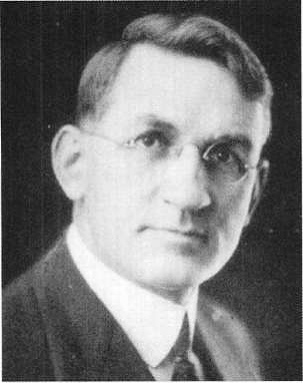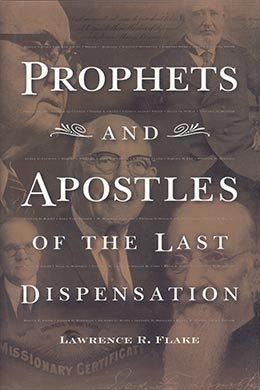Richard Roswell Lyman
Lawrence R. Flake, Prophets and Apostles of the Last Dispensation (Provo, UT: Religious Studies Center, Brigham Young University, 2001), 443–45.

Born: 23 November 1870, Fillmore, Utah
Quorum of the Twelve: 7 April 1918 (age 47)
Excommunicated: 12 November 1943
Rebaptized: 27 October 1954
Died: 31 December 1963 (age 93), Salt Lake City, Utah
One of the best-kept buggies and teams in Tooele, Utah, was owned by Francis M. Lyman, who had given his young but very meticulous son Richard the job of caring for the horses, their harnesses, and the shiny Concord buggy. As a child, Richard suffered from impaired vision and was said not to have smiled until he was ‘‘‘a strapping boy.” At age eleven, he worked for apostle Heber J. Grant, often meeting him at the train station with a team and buggy; Brother Grant would usually bring raisins and candy to share with Richard as the young teamster drove the apostle home. Richard further served the Grant family by staying at their home and helping Sister Grant and the children when Brother Grant was away. The excellent influence of Sister Grant’s saintly prayers greatly inspired the young boy. His own heritage also boasted many great Latter-day Saints, his father and grandfather being Francis M. and Amasa M. Lyman, both apostles for many years.
At the age of twelve, Richard began a lengthy and very fine education. He attended Brigham Young Academy in Provo, Brigham Young College in Logan, and again the academy in Provo, graduating from there in 1891. During this time he met Amy Brown, whom he courted for eight years and then married. Sister Lyman, a woman of many talents, was later called to be general Relief Society president. The Lymans traveled to Ann Arbor, Michigan, where Richard graduated in 1895 with a degree in civil engineering. At that university he had the unusual honor of being elected twice to the office of class president. Following several years of teaching civil engineering at the University of Utah, he resumed his studies at the University of Chicago and at Cornell University in Ithaca, New York, obtaining master’s and doctor’s degrees from the latter institution in 1903 and 1905 respectively.
Achieving great distinction as an engineer, Dr. Lyman was asked to serve on important projects outside of the state of Utah. He was a member of the Engineering Board of Review for the Sanitary District of Chicago, one of five engineers appointed for the Great Columbia Basin Reclamation Project, and consulting engineer for the Metropolitan Water District of Southern California. He also published many articles, receiving for one of his studies the J. James R. Croe Medal, awarded in the field of civil engineering. The list of businesses in which he functioned as an executive is long and impressive. It was he who devised the street numbering system used in Salt Lake City, which enables a newcomer to locate any house in town. He retained a post at the University of Utah until 1918, at which time he was called to the Quorum of the Twelve.
While an apostle, Elder Lyman served as second assistant to Anthony W. Ivins, who was superintendent of the Young Men’s Mutual Improvement Association. Traveling extensively throughout the Church, he won the love and respect of many, always giving hearty words of encouragement and praise to those who needed the uplifting influence of a bighearted and sympathetic man.
In 1943, through his own confession and the action of the First Presidency, Brother Lyman was excommunicated from the Church “for violation of the Christian law of chastity.” [1] Eleven years later he was rebaptized, on 27 October 1954, and on 31 December 1963 he died in the fellowship of the Church at the age of ninety-three. [2]
Notes
[1] George Albert Smith, “Notice of Excommunication,” Deseret News, 13 November 1943, 1.
[2] See also Bryant S. Hinckley, “Richard R. Lyman,” Improvement Era, September 1932, 648–52.
